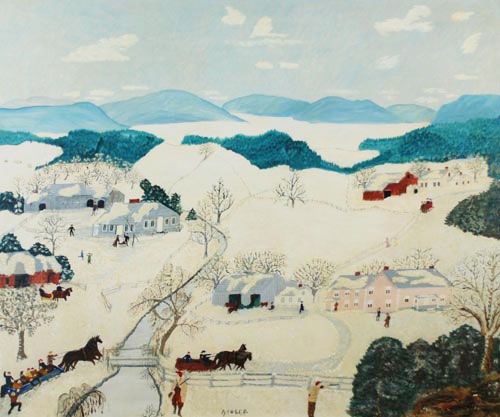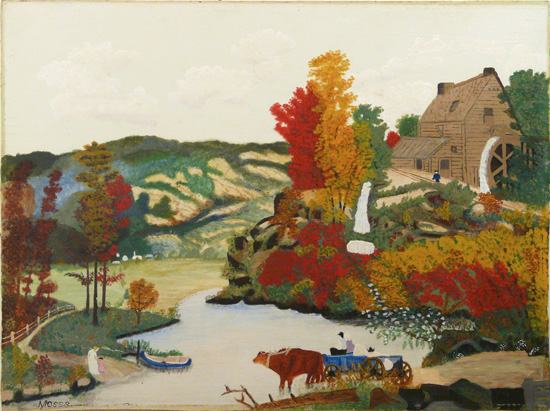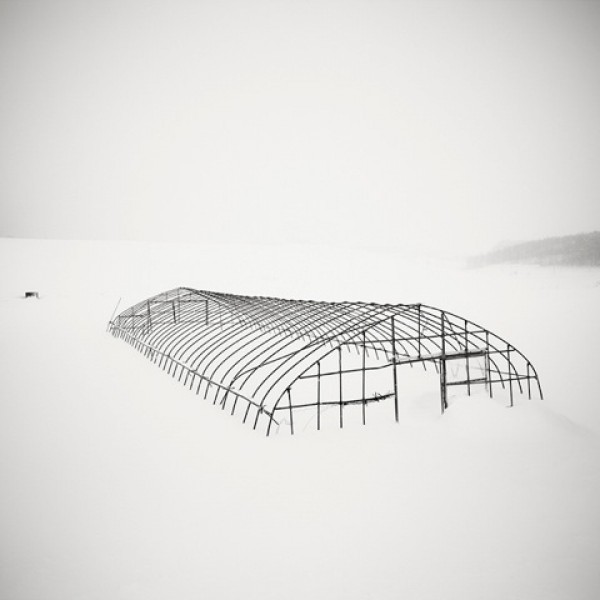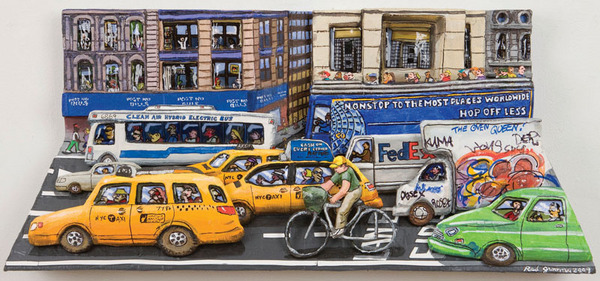
Anna Mary Robertson “Grandma” Moses, “Going to Grandma’s,” oil on board, 1944 (© Grandma Moses Properties Co., New York)
A LOAN EXHIBITION CELEBRATING THE 70th ANNIVERSARY OF THE ARTIST’S DISCOVERY
Galerie St. Etienne
24 West 57th St. between Fifth & Sixth Aves.
Tuesday-Saturday through April 3
212-245-6734
www.gseart.com
Seventy years ago, Galerie St. Etienne held a solo exhibition of the work of a self-taught painter from upstate New York. The eighty-year-old artist, Anna Mary Robertson Moses, chose not to attend the opening of “What a Farmwife Painted” because she was already familiar with all the canvases. Also known as Grandma Moses, she painted idyllic scenes in a folksy style, Americana as seen through a primitivist lens. One of her earliest champions was Galerie St. Etienne founder Otto Kallir, who collected outsider art in addition to such German Expressionists as Egon Schiele, Käthe Kollwitz, Emil Nolde, and Oskar Kokoschka. Kallir’s granddaughter Jane, who now runs the gallery, is celebrating the seventieth anniversary of Grandma Moses’s entrée into the international art world with a revelatory retrospective that will change everything you ever thought about the famous octagenarian.

Anna Mary Robertson “Grandma” Moses, “When Leaves Turn,” oil on board, 1943 (© Grandma Moses Properties Co., New York)
Nearly seventy works are on view, in addition to archival photographs and some of Moses’s tools. Using oil paint on board or pressed wood, Moses created charming landscapes of her town, horizontal images often with small figures in the foreground, houses and barns in the middle of the canvas, and sky in the upper third. Bathed in spring greens or winter whites, the pictures depict such activities as taking in the laundry, celebrating weddings and holidays, making apple butter, flying a kite, and sledding through the snow. The peaceful settings are interrupted in several works by storms that have hit or are on their way. Two of the most vibrant pieces are “The Quilting Bee,” which features her boldest use of color and is the only painting set indoors, and “When Leaves Turn,” dominated by gorgeous fall hues. The show reveals that Moses was no mere curiosity; she was a skilled painter with a unique visual language. As the excellent exhibition essay concludes, “After seventy years, Grandma Moses’s achievement endures. This, in the end, is the mark of artistic greatness: the ability of the work to survive in multiple shifting contexts and remain forever fresh.”



